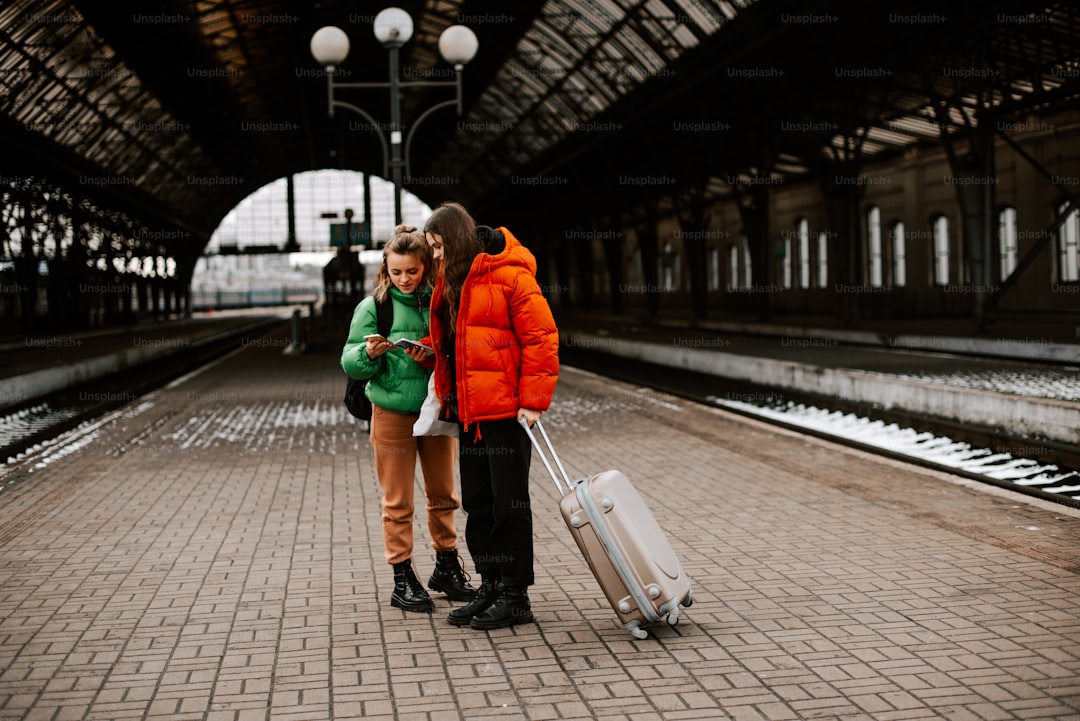Minimalist Nomad Living Sustainable Travel with Light Packing

Why Minimalism Matters for the Modern Nomad
Minimalism is more than a design aesthetic; it is a mindset that shapes how we experience the world. For a digital nomad, each decision about what to bring, what to buy, and how to move creates a ripple that reaches far beyond personal convenience. By stripping away excess, we free mental bandwidth, reduce the physical load, and lessen the ecological impact of our journeys.
When we travel light, we are forced to ask ourselves: Do I really need this? That question becomes a daily practice that builds discipline. It also aligns with the growing awareness that consumption drives climate change, waste, and resource depletion. A minimalist approach therefore becomes a sustainable strategy, allowing us to live fully while leaving a smaller footprint.
Core Principles of Sustainable Travel
Sustainable travel rests on three pillars: environmental stewardship, cultural respect, and economic fairness. Each pillar can be reinforced through minimalist habits.
-
Environmental stewardship focuses on reducing carbon emissions, waste, and resource use. Choosing low‑impact transportation, packing reusable items, and limiting energy consumption in accommodations are direct applications of this principle.
-
Cultural respect means engaging with local communities without imposing our own consumption patterns. By traveling with fewer possessions, we become less conspicuous and more open to authentic experiences.
-
Economic fairness encourages us to spend money in ways that benefit local economies. Buying locally produced goods, staying in community‑run hostels, and using shared services keep money circulating where it is needed most.
The Psychology of Light Packing
Carrying a heavy bag can trigger stress, fatigue, and a sense of being tethered to material possessions. Light packing counters these effects in several ways.
First, a smaller load reduces physical strain, which translates into more energy for exploration and work. Second, the act of curating a minimal kit forces us to prioritize values over habits, reinforcing intentional living. Third, a streamlined suitcase creates a visual reminder of the commitment to sustainability, reinforcing the habit each time we close the zipper.
Studies on decision fatigue show that fewer choices lead to clearer thinking. By limiting the number of outfits, gadgets, and toiletries we own, we reduce daily decision points, freeing mental space for creative work and meaningful connections.
Building a Capsule Wardrobe for Nomads
A capsule wardrobe is a curated collection of versatile clothing that can be mixed and matched for any occasion. For a nomad, the goal is to maximize utility while minimizing volume.
Choose Neutral Base Pieces
Neutral colors such as black, navy, gray, and earth tones pair easily with each other. A well‑fitted black t‑shirt, a charcoal long‑sleeve, and a beige linen shirt can be layered for temperature changes.
Prioritize Technical Fabrics
Look for fabrics that are quick‑dry, wrinkle‑resistant, and breathable. Merino wool excels at regulating temperature and resists odor, meaning fewer washes. Synthetic blends with moisture‑wicking properties keep you comfortable during long flights or bike rides.
Limit Footwear to Two Pairs
One pair of sturdy, waterproof shoes for hiking or urban walking and a lightweight sandal or slip‑on for warm climates keep the shoe count low. Choose shoes that break in quickly and can handle a range of terrains.
Add a Multipurpose Outer Layer
A lightweight, packable rain jacket with a hood serves as wind protection, rain shield, and an extra layer for cooler evenings. Look for jackets that compress into a small stuff sack.
Seasonal Adjustments
When moving between climates, swap out a few pieces rather than overhaul the entire wardrobe. A thin thermal base layer for colder months and a breathable, sleeveless top for tropical zones keep the core set adaptable.
Tech Essentials That Fit in a Backpack
Digital nomads rely on technology, but gadgets can quickly become baggage. Streamlining tech gear not only reduces weight but also conserves energy by limiting charging needs.
A Single Multi‑Device Laptop
Choose a laptop that balances performance with portability. Ultrabooks with long battery life and efficient processors can handle writing, design, and coding without the need for a separate desktop.
Smartphone as Primary Communication Hub
A modern smartphone replaces many single‑purpose devices. With a good camera, navigation apps, and a reliable data plan, it becomes the central hub for work and leisure.
Compact Power Solutions
A high‑capacity power bank (10,000‑20,000 mAh) and a universal travel adapter cover most charging scenarios. Solar chargers can supplement power in remote locations, reducing reliance on grid electricity.
Minimalist Audio
Wireless earbuds or a small over‑ear headphone provide privacy for calls and immersion for music. Look for models with long battery life and a compact charging case.
Cloud‑Based Storage
Store documents, photos, and backups in the cloud. This eliminates the need for external hard drives and reduces the risk of data loss while traveling.
Zero Waste Toiletries and Personal Care
Personal hygiene often generates waste through disposable containers and single‑use wipes. Transitioning to zero‑waste toiletries can dramatically cut down on plastic.
Refillable Containers
Invest in a set of stainless steel or glass bottles for shampoo, conditioner, and body wash. Many hostels and gyms provide refill stations, or you can purchase travel‑size refill packs.
Solid Alternatives
Solid shampoo bars, toothpaste tablets, and deodorant sticks avoid liquid spills and eliminate packaging. They are lightweight, last longer, and are easy to store in a small toiletry bag.
Reusable Items
A bamboo toothbrush, a washable cotton round, and a small, foldable microfiber towel replace disposable options.
Eco‑Friendly Menstrual Products
Menstrual cups or reusable cloth pads reduce waste dramatically compared to disposable pads and tampons.
Minimalist Grooming
Limit grooming tools to a single nail clipper, a small pair of scissors, and a compact razor. Choose a razor with a replaceable head to avoid discarding the entire handle.
Food, Fuel and Local Economies
Eating sustainably while on the move supports both health and the environment.
Cook Light, Cook Local
A compact portable stove and a small pot enable you to prepare simple meals. Purchase fresh produce from local markets, which reduces the carbon footprint of shipping and supports local farmers.
Bulk Staples
Carry lightweight staples such as rice, lentils, and oats in resealable bags. These foods have a long shelf life and can be combined with local ingredients for nutritious meals.
Reduce Single‑Use Plastics
Bring a reusable water bottle, coffee cup, and set of cutlery. Many cafés offer discounts for using your own cup, and refill stations are increasingly common in airports and train stations.
Energy‑Efficient Cooking
Use a fuel canister that is designed for low emissions, or consider a solar cooker for sunny destinations.
Food Waste Management
Plan meals to avoid leftovers that can spoil. If you have excess food, share with fellow travelers or local communities where appropriate.
Transportation Choices and Carbon Footprint
The mode of transportation contributes significantly to a nomad’s carbon impact.
Prioritize Low‑Impact Options
When possible, choose trains, buses, or shared rides over short‑haul flights. Trains in Europe and parts of Asia offer high speed, comfort, and lower emissions per passenger.
Fly Smart
If a flight is unavoidable, select airlines that have strong sustainability programs, use newer, fuel‑efficient aircraft, and consider purchasing carbon offsets for the journey.
Bike and Walk
In many cities, bicycles and walking are the fastest ways to navigate. Carry a foldable bike or use city bike‑share programs to replace car rentals.
Car‑Sharing and Ride‑Pooling
When a car is needed, use ride‑pooling apps that match you with other travelers heading the same direction. This reduces the number of vehicles on the road.
Off‑Grid Power
When staying in remote locations, use solar chargers, LED lanterns, and energy‑efficient devices to minimize reliance on diesel generators or grid electricity.
Community and Shared Resources
Building a community around minimalism and sustainability amplifies individual impact.
Co‑Living Spaces
Co‑living houses, hostels, and eco‑villages provide shared kitchens, laundry, and workspaces. By pooling resources, each resident reduces personal consumption.
Skill Swaps
Offer your expertise—whether in coding, graphic design, or language tutoring—in exchange for services you need, such as bike repairs or cooking lessons. This exchange reduces the need for monetary transactions and fosters deeper connections.
Local Volunteering
Participate in beach clean‑ups, tree planting, or community garden projects. Volunteering not only benefits the environment but also embeds you in the local culture.
Online Minimalist Networks
Join forums, social media groups, and Discord servers dedicated to minimalism and sustainable travel. Sharing packing lists, product reviews, and destination tips creates a knowledge base that helps everyone travel lighter and greener.
Practical Packing Checklist
A well‑thought‑out checklist ensures you bring only what you truly need.
Clothing
- 2 neutral t‑shirts
- 1 long‑sleeve shirt (technical fabric)
- 1 lightweight sweater or fleece
- 1 pair of convertible travel pants (zip‑off)
- 1 pair of shorts or skirt
- 2 underwear sets (quick‑dry)
- 2 pairs of socks (merino)
- 1 set of sleepwear
- 1 rain jacket (packable)
- 1 pair of sturdy shoes (waterproof)
- 1 pair of sandals or slip‑ons
Tech
- Ultrabook or laptop
- Smartphone with charger
- Universal travel adapter
- Power bank (15,000 mAh)
- Compact solar charger (optional)
- Wireless earbuds or headphones
- USB‑C to USB‑C cable (or appropriate)
Toiletries
- Refillable shampoo/conditioner bottles (2 oz each)
- Solid shampoo bar
- Toothpaste tablets (5‑10)
- Bamboo toothbrush
- Deodorant stick
- Small razor with replaceable head
- Nail clipper, scissors, tweezers
- Reusable cotton rounds
- Menstrual cup (if applicable)
Kitchen & Food
- Collapsible silicone bowl
- Lightweight stainless steel pot (2‑liter)
- Reusable cutlery set (spork, knife)
- Reusable water bottle (0.75 L)
- Coffee mug (foldable)
- Small resealable bags for bulk staples (rice, lentils)
Miscellaneous
- Compact travel towel (microfiber)
- Small first‑aid kit (bandages, antiseptic wipes)
- Travel insurance documents (digital copy)
- Passport, visas, vaccination record (digital and printed)
- Notebook and pen (recycled paper)
- Packable daypack (20 L)
Maintenance, Repair and Upcycling
Even the most carefully selected gear will face wear and tear.
Simple Repairs
Carry a small repair kit: a needle, thread, fabric patches, a mini screwdriver set, and zip‑tape. Learning basic stitching can extend the life of clothing and gear.
Upcycling on the Road
Transform an old t‑shirt into a reusable bag, or turn a spare scarf into a head‑wrap. Creative repurposing reduces waste and gives personal meaning to items.
Digital Maintenance
Regularly back up work to multiple cloud services and an encrypted USB drive. Keeping digital files safe prevents data loss that could otherwise require new devices.
Mindful Consumption on the Road
Every purchase is a decision point.
Adopt a “One‑In, One‑Out” Rule
If you acquire a new item, consider donating, recycling, or discarding something you already own. This maintains a low inventory and forces you to evaluate necessity.
Choose Sustainable Brands
Support companies that use recycled materials, ethical labor practices, and transparent supply chains. Look for certifications such as Fair Trade, GOTS, or B Corp.
Avoid Impulse Souvenirs
Instead of buying trinkets, collect experiences: a photograph, a recipe, or a handwritten note from a local friend. If you do want a tangible reminder, opt for a small, locally made craft that supports artisans.
Rental Over Ownership
For items you need only occasionally—such as a surfboard, camping gear, or high‑end camera—use local rental services. This reduces the carbon cost of manufacturing and shipping bulky equipment.
Creating a Nomad Routine that Respects the Planet
A sustainable lifestyle thrives on consistent habits.
Morning Rituals
Start the day with a brief mindfulness practice that includes gratitude for the environment. Use a reusable mug for tea or coffee, and keep water in a reusable bottle.
Work Hours
Set a dedicated workspace, whether in a co‑working hub or a quiet café. Use a power strip to turn off devices completely when not in use, reducing phantom energy draw.
Evening Reflection
Document daily waste, energy usage, and any sustainable choices made. This journal helps track progress and highlights areas for improvement.
Weekly Reviews
Every week, evaluate your packing list, expenses, and carbon footprint. Adjust your gear, habits, and routes based on what you learned.
Resources and Tools for Ongoing Growth
Staying informed is key to continuous improvement.
- Carbon Footprint Calculators – Websites that estimate emissions from flights, accommodations, and daily activities.
- Minimalist Packing Apps – Mobile apps that help you visualize and organize a lightweight suitcase.
- Eco‑Travel Guides – Books and blogs that focus on sustainable destinations and low‑impact itineraries.
- Online Courses – Platforms offering lessons on zero‑waste living, repair skills, and responsible tourism.
- Community Platforms – Forums and social networks dedicated to nomadic minimalism where members share tips and resources.
By integrating these tools into your routine, you create a feedback loop that encourages smarter choices and deeper connections with the planet and the people you meet along the way.
Living as a minimalist nomad is not about sacrificing comfort; it is about redefining comfort in terms of freedom, intention, and stewardship. Light packing becomes a catalyst for a more mindful existence, allowing you to traverse continents with a lighter carbon footprint, a clearer mind, and a deeper respect for the places you call temporary home. Embrace the practice, share the knowledge, and watch how small, intentional steps transform both your journey and the world around you.
Random Posts

Your First Steps to Nomad Living Ultimate Guides and Checklists
Kickstart your nomad life with a clear purpose and step by step checklists that turn wanderlust into a sustainable, remote ready reality.
2 months ago

Mastering Remote Work Productivity and Finding Top Digital Nomad Jobs
Unlock the secrets to thriving remotely with proven productivity frameworks, essential tools, and step by step tactics to land top digital nomad jobs and boost your freedom focused career.
2 weeks ago

Essential Packing Checklist for New Nomads
Discover the ultimate packing checklist for new nomads: essential items, smart organization tips, and how to customize your gear for any climate or remote work setup, ensuring stress free travel.
2 weeks ago

Smart Finance and Tax Strategies for Global Nomads
Smart finance and tax tips for digital nomads: banking, payments, compliance and asset protection made simple so you can travel worry free
2 months ago

Mastering Remote Work with Proven Productivity Tools
Learn the top productivity tools for remote work and how to blend them into a seamless system that boosts focus, organization, and collaboration, so you thrive, not just survive, wherever you work.
2 months ago
Latest Posts

Essential Software Every Remote Professional Should Use
Master remote work with essential tools: instant messaging like Slack, high definition video calls such as Zoom, and asynchronous voice apps. Streamline communication, stay connected and boost productivity.
1 day ago

Mastering Remote Work Productivity for Digital Nomads and Freelancers
Learn proven habits, tools, and tactics that help digital nomads and freelancers stay focused, deliver quality work, and maintain a sustainable lifestyle while traveling the world.
1 day ago

Tech‑Friendly European Towns Perfect for Remote Living
Discover Europe’s best small towns where fast internet, affordable living and vibrant tech communities let you work remotely while soaking up historic charm, lakeside views or mountain air.
1 day ago